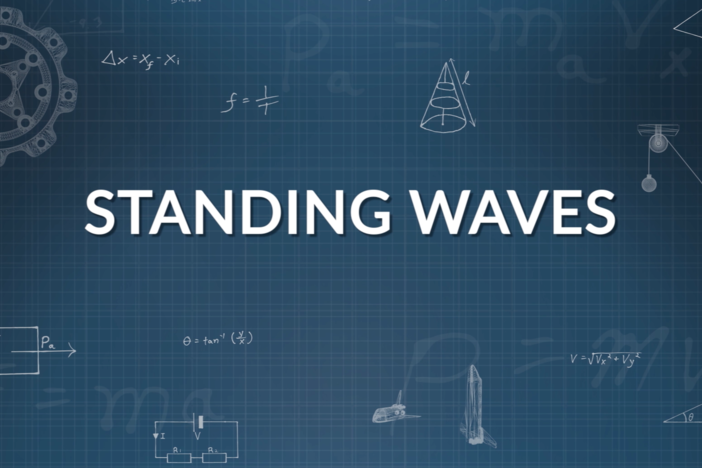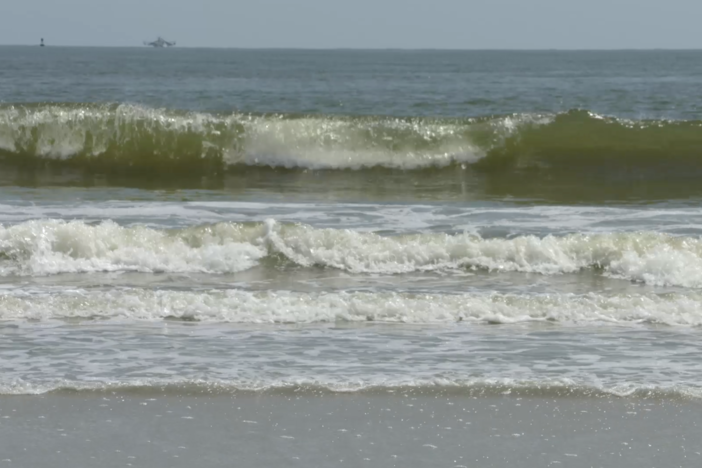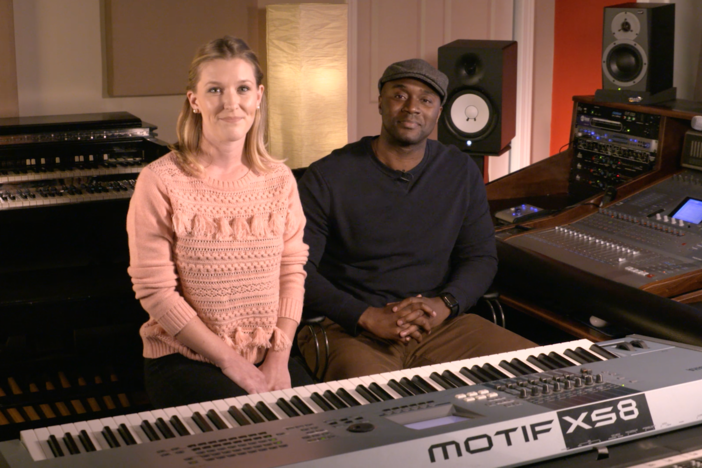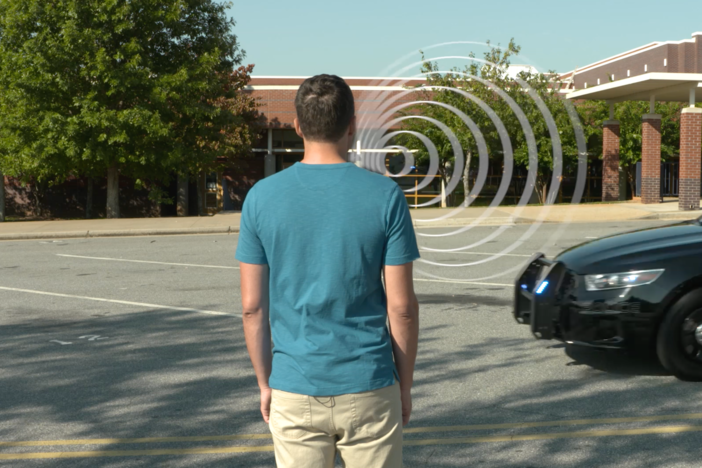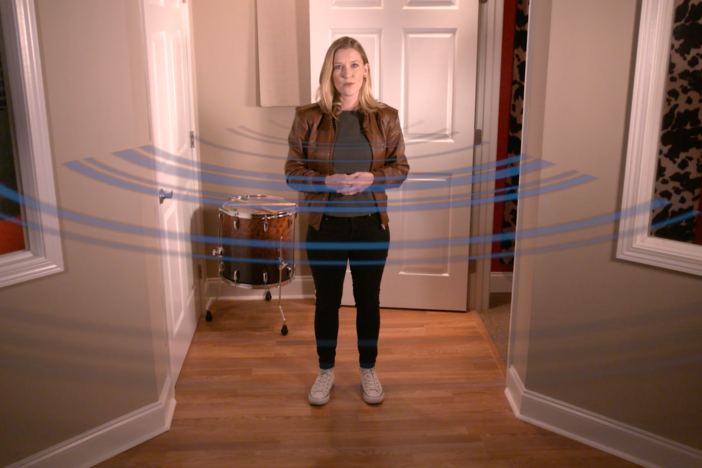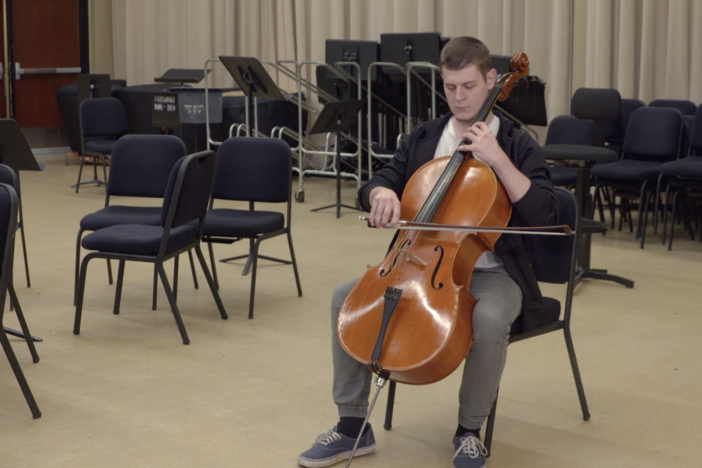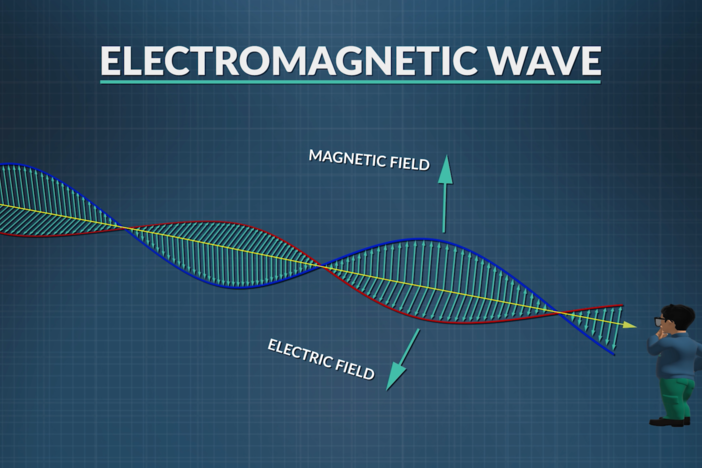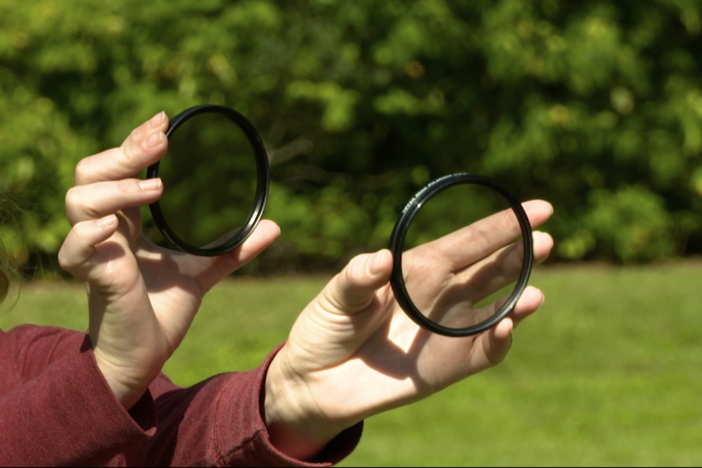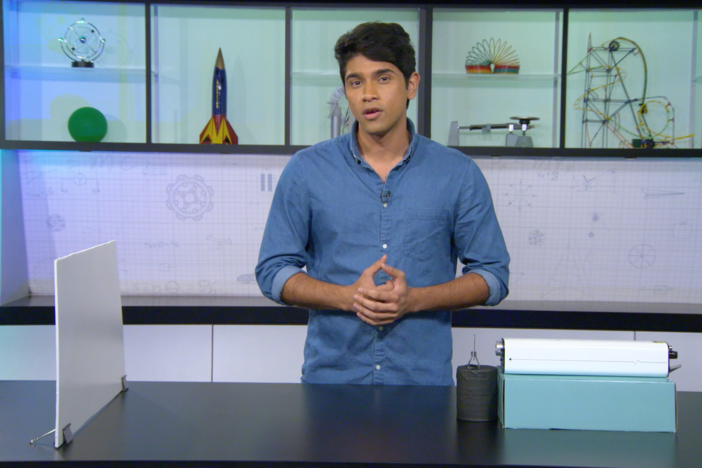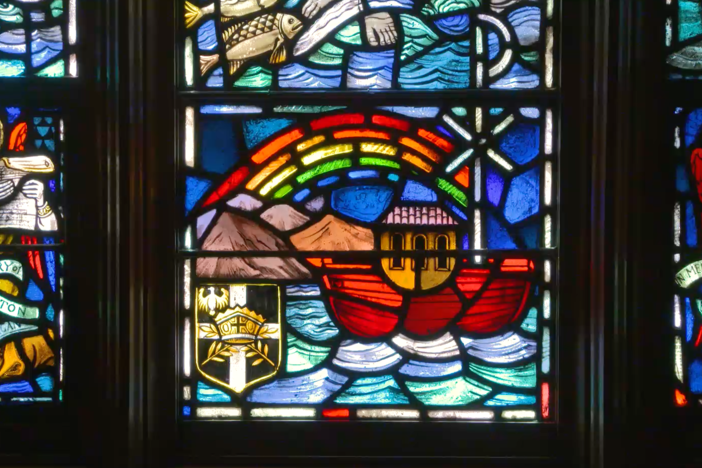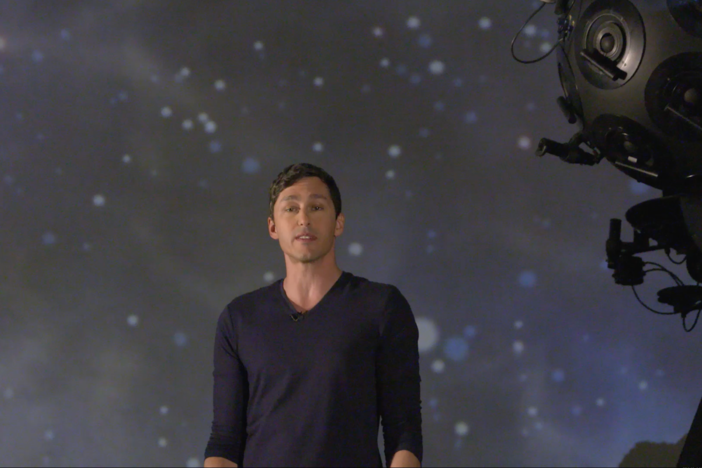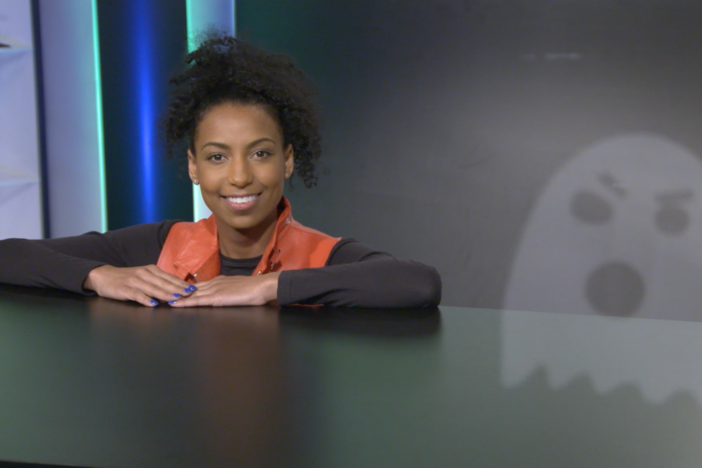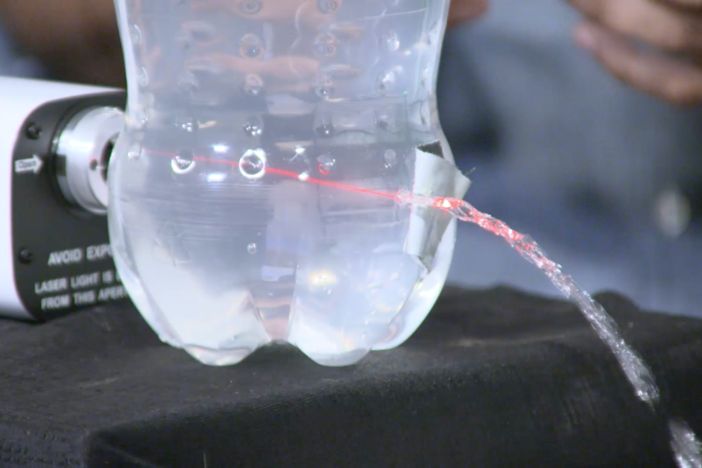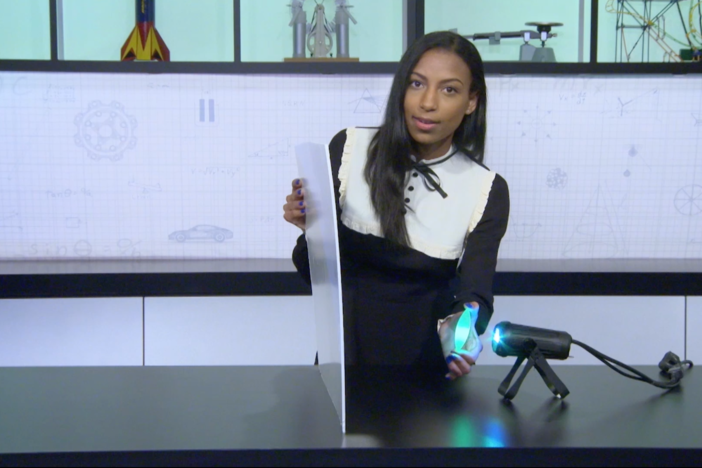Segment E: Sound: Standing Waves and Resonance
We visit a university orchestra to help us understand wave interference and how resonance affects waves moving through different types of air columns and strings. We explore how to find various resonant frequencies using the wave velocity equation in combination with an equation that relates the wavelength of a wave to the length of a string, or a closed or open-ended tube.
Segment E: Sound: Standing Waves and Resonance
We visit a university orchestra to help us understand wave interference and how resonance affects waves moving through different types of air columns and strings. We explore how to find various resonant frequencies using the wave velocity equation in combination with an equation that relates the wavelength of a wave to the length of a string, or a closed or open-ended tube.
Science
Obtain, evaluate, and communicate information about the properties and applications of waves.
Develop and use models to describe and calculate characteristics related to the interference and diffraction of waves (single and double slits).
Construct an argument that analyzes the production and characteristics of sounds waves.
Obtain, evaluate, and communicate information to explain the properties of waves.
Develop models based on experimental evidence that illustrate the phenomena of reflection, refraction, interference, and diffraction.
-Understand the concept of resonance.
-Describe how a standing wave is formed and relate its formation to the concept of interference.
-Describe the different types of standing waves, including on a string, in an open-ended tube, and in a closed-ended tube.
-Calculate the different wavelengths and resonant frequencies that occur at various string and tube lengths.
-Indicate how musical instruments use standing waves and resonance in order to make different frequencies of sound.
antinode - the position on a standing wave where constructive interference occurs.
constructive interference - when two waves are identical in frequency and, in the case of a sound wave, their compressions and rarefactions are aligned in phase.
destructive interference - when two waves interfere and are 180º out of phase with each other.
fundamental frequency (f1) - the lowest resonant frequency at which an object will resonate that produces the simplest standing wave.
harmonic - an overtone accompanying a fundamental tone at a fixed interval, produced by vibration of a string, column of air, etc., in an exact fraction of its length.
node - the position on a standing wave where destructive interference occurs.
resonance - occurs when small forces are applied at the resonant frequency of an object and the amplitude of the vibration increases.
resonant frequency - the natural frequency at which an object vibrates.
standing wave - a wave produced by the interference of two traveling, identical waves moving in opposite directions.
The Physics in Motion teacher toolkit provides instructions and answer keys for study questions, practice problems, labs for all seven units of study. GPB offers the teacher toolkit at no cost to Georgia educators.To order your teacher toolkit, complete and submit this form to request the teacher toolkit. You only need to submit this form one time to get materials for all seven units.
